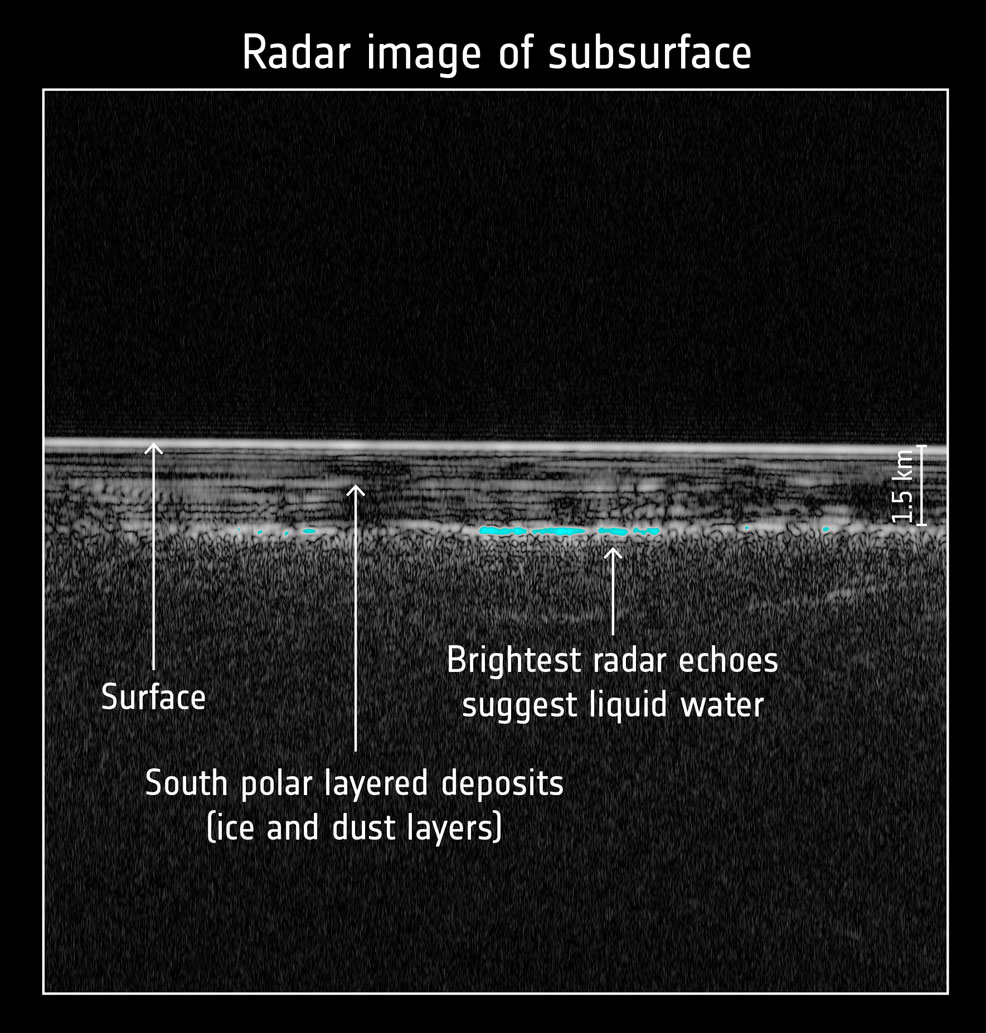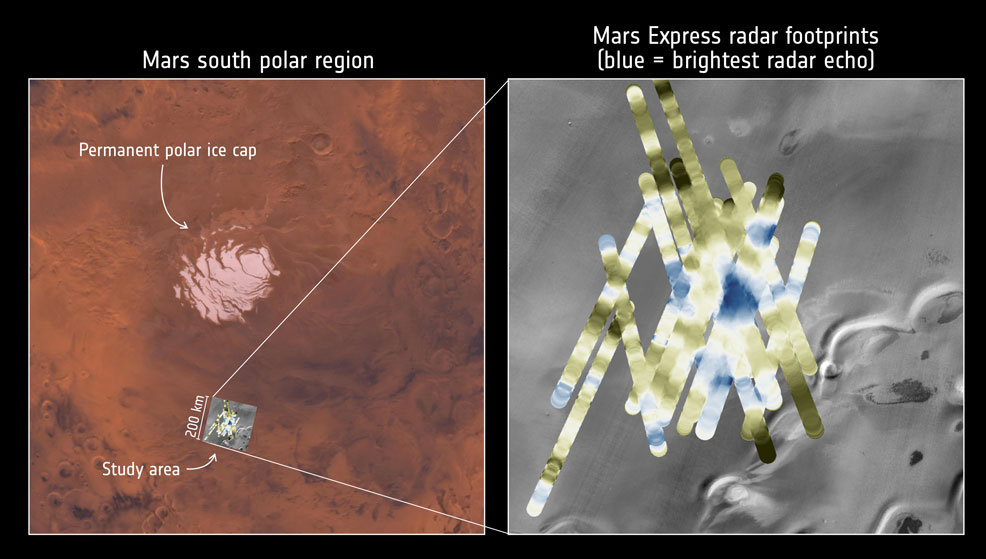
25th July 2018 Large underground lake found on Mars Scientists report the discovery, based on radar studies, of a subglacial lake on Mars, 1.5 km (0.93 mi) below the southern polar region and extending sideways about 20 km (12 mi), the first known stable body of water on the planet.
Mars Advanced Radar for Subsurface and Ionosphere Sounding instrument (MARSIS) is the first radar sounder ever to orbit another planet. It has been used by the European Space Agency (ESA) since 2005 on its Mars Express mission as a low frequency, pulse-limited radar sounder and altimeter with ground-penetrating radar capability. Using MARSIS, researchers probed the southern polar region of Mars between May 2012 and December 2015. The results of that detailed subsurface scan have now been published in the journal Science. In a flat area measuring 200 km (120 miles) wide – not exhibiting any peculiar topographic characteristics – there is strong evidence of an underground lake, visible as a very bright radar reflection in a 20 km (12 mile)-wide zone. As shown in the image above, this liquid water is trapped below the South Polar Layered Deposits – a crumpled mixture of dust and water ice, above which lies a one metre (3 ft) seasonal covering of CO2 ice. Temperatures at the base of the polar cap reach down to −68°C (−91°F). However, the water is believed to be kept in liquid form by a combination of pressure from the overlying glacier and the antifreeze effects of magnesium and calcium perchlorates. Since the raw data coverage for the south pole is limited, the researchers state that "there is no reason to conclude that the presence of subsurface water on Mars is limited to a single location." "This subsurface anomaly on Mars has radar properties matching water or water-rich sediments," says Roberto Orosei, principal investigator of the MARSIS experiment and lead author of the paper published today. "This is just one small study area; it is an exciting prospect to think there could be more of these underground pockets of water elsewhere, yet to be discovered."
"We'd seen hints of interesting subsurface features for years, but couldn't reproduce the result from orbit to orbit, because the sampling rates and resolution of our data was previously too low," adds Andrea Cicchetti, MARSIS operations manager and paper co-author. "We had to come up with a new operating mode to bypass some onboard processing and trigger a higher sampling rate, and thus improve the resolution of the footprint of our dataset: now we see things that simply were not possible before." Because the lake is so salty, it would be difficult for life to exist there, but so-called "extremophile" organisms could be present, or might have evolved there in the distant past. Such microbes have been found in Lake Vostok, the largest of the subglacial lakes below Antarctica. "We have long since known that the surface of Mars is inhospitable to life as we know it, so the search for life on Mars is now in the subsurface," explains Dr Manish Patel from the Open University, who was not involved in the study. "This is where we get sufficient protection from harmful radiation, and the pressure and temperature rise to more favourable levels. Most importantly, this allows liquid water, essential for life." "The long duration of Mars Express, and the exhausting effort made by the radar team to overcome many analytical challenges, enabled this much-awaited result, demonstrating that the mission and its payload still have a great science potential," says Dmitri Titov, Mars Express project scientist. "This thrilling discovery is a highlight for planetary science and will contribute to our understanding of the evolution of Mars, the history of water on our neighbour planet and its habitability."
Comments »
If you enjoyed this article, please consider sharing it:
|








